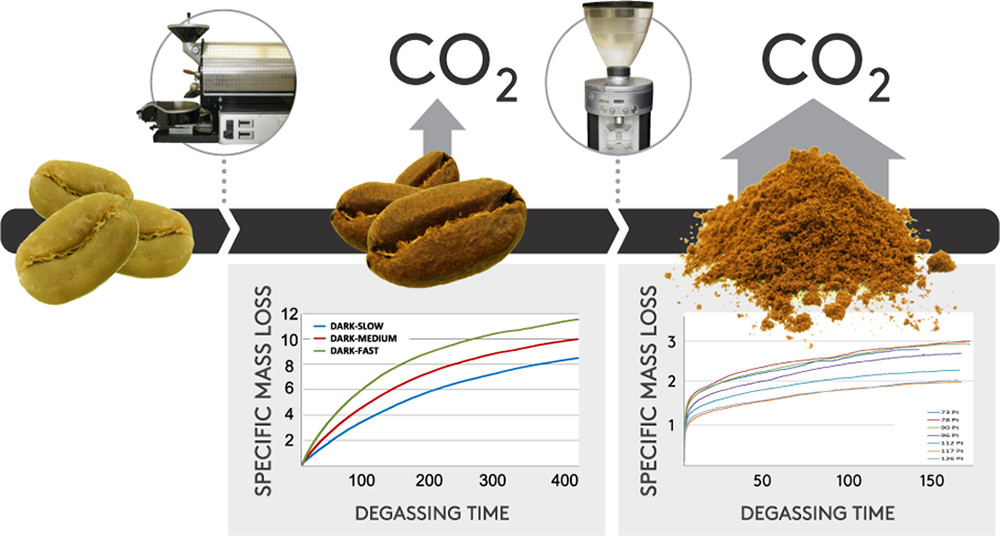Source: https://pubs.acs.org/doi/full/10.1021/acs.jafc.7b03310

Abstract
During the roasting of coffee, thermally driven chemical reactions lead to the formation of gases, of which a large fraction is carbon dioxide (CO2).
Part of these gases is released during roasting while part is retained inside the porous structure of the roasted beans and is steadily released during storage or more abruptly during grinding and extraction.
The release of CO2 during the various phases from roasting to consumption is linked to many important properties and characteristics of coffee. It is an indicator for freshness, plays an important role in shelf life and in packaging, impacts the extraction process, is involved in crema formation, and may affect the sensory profile in the cup.
Indeed, and in view of the multiple roles it plays, CO2 is a much underappreciated and little examined molecule in coffee. Here, we introduce an accurate, quantitative, and time-resolved method to measure the release kinetics of gases from whole beans and ground coffee using a gravimetric approach. Samples were placed in a container with a fitted capillary to allow gases to escape.
The time-resolved release of gases was measured via the weight loss of the container filled with coffee. Long-term stability was achieved using a customized design of a semimicro balance, including periodic and automatic zero value measurements and calibration procedures.
The novel gravimetric methodology was applied to a range of coffee samples: (i) whole Arabica beans and (ii) ground Arabica and Robusta, roasted to different roast degrees and at different speeds (roast air temperatures). Modeling the degassing rates allowed structural and mechanistic interpretation of the degassing process.
__
Read more: https://pubs.acs.org/doi/full/10.1021/acs.jafc.7b03310
time-resolved-gravimetric-method-to-assess-degassing-of-roasted-coffee